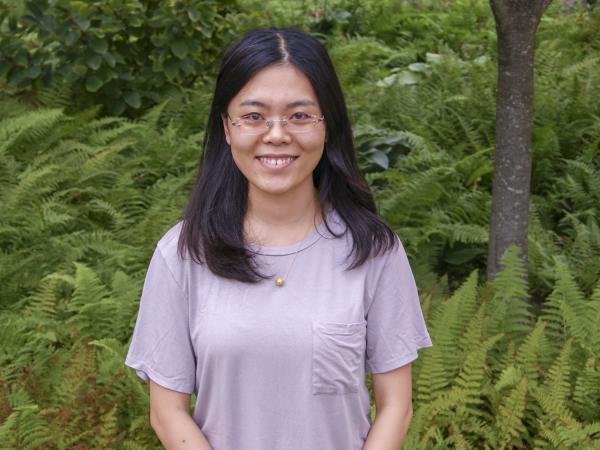
Ph.D. candidate Xueying Lu is exploring "metamaterials" to increase microwave power and reduce accelerator size.
Paul Rivenberg
MIT Ph.D. candidate seeks a path to a smaller particle accelerator.
September 21, 2018
MIT graduate student Xueying Lu was named the 2018 Student Poster Winner at the Advanced Accelerator Concept (AAC) Workshop, a biennial forum for intensive discussions on long-term advanced accelerator physics and technology. Her winning poster, “High microwave power extraction from a metamaterial structure for wakefield acceleration” describes her research at Argonne National Laboratory, a collaboration with MIT’s Plasma Science and Fusion Center (PSFC). Lu does research at the Center under the supervision of Richard Temkin, Senior Scientist in the MIT Physics Department and Head of the Plasma Science and Technology Division at the PSFC.
Lu explains that the goal of much particle accelerator research is to improve the so-called “accelerating gradient,” which determines how fast the particles can gain speed to reach a high energy.
“If you want to increase the energy level of particle accelerators without building expensive, colossal machines, you need to raise the accelerating gradient. Currently, most high-energy accelerators are large: CERN’s Large Hadron Collider is 27 kilometers long.”
Lu explored using “metamaterials” to increase the accelerating gradient. A metamaterial is an engineered structure with properties not found in nature. Natural materials, such as water, have a positive refractive index. But metamaterials, designed with elements much smaller than the wavelength of the transiting microwaves or light, can have a negative refractive index. This creates room for improved experimental results.
Focusing on metamaterials, Lu designed a small metallic structure, only about 8 centimeters long, comprising a series of flat rectangles cut through with two alternating designs. Adding it to the beam line of the Argonne Wakefield Accelerator, she was able to shoot an electron beam through the center of this geometry, generating an electromagnetic field more intense than was previously possible.
The experiment required Lu to travel between Boston and Chicago throughout the 2017-18 winter, a time when airport delays were the norm. She notes that it was well worth the effort to work on the Argonne accelerator, which can produce 70 MeV of electron beams.
“They have world record high charge in a single electron bunch,” Lu says. “With that I can generate very high microwave power to provide a high accelerating gradient without increasing the size of the accelerator.”
Lu looks forward to defending her thesis before the end of this year. Titled “Metamaterial structures for high power microwaves and accelerator applications,” it combines the work she did at Argonne with research on the high-power microwave facility built in-house at the PSFC.
This research is sponsored by the U.S. Department of Energy, Office of High Energy Physics.
Topics: Technology & engineering, Accelerators & detectors, Rick Temkin